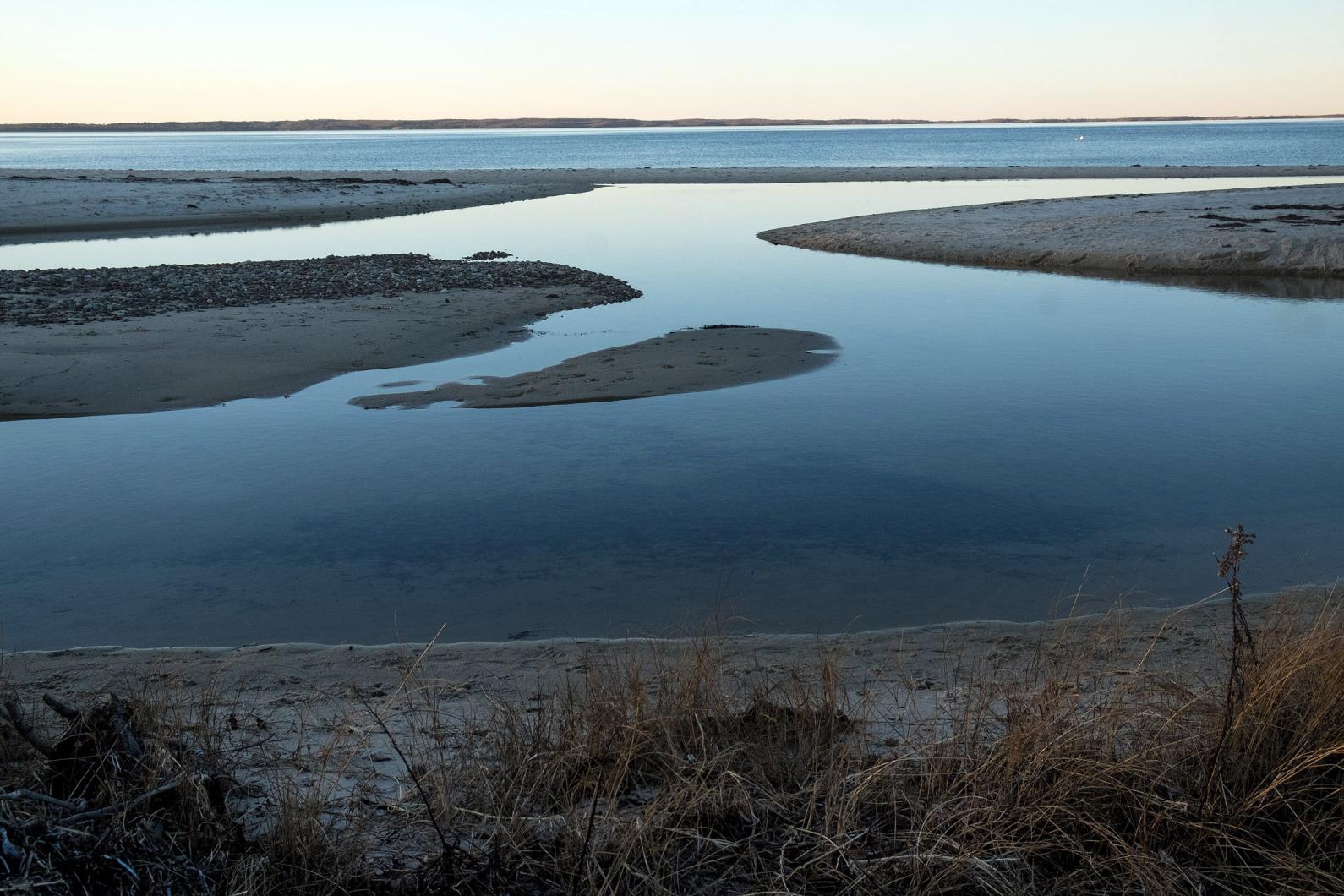Longstanding efforts to widen a historic herring run and improve circulation in James Pond are gaining momentum as town and state officials work to develop a maintenance plan for the pond’s winding channel to Vineyard Sound.
West Tisbury herring warden Johnny Hoy has petitioned the state Division of Marine Fisheries to allow for regular clearing of the channel, where sand obstructs the passage of river and blueback herring, which spawn every spring and support larger species along the coast.
The pond covers about 50 acres on the north shore and has suffered from declining water quality. Wider openings to the sea could improve tidal exchange while also benefiting a range of species, including shellfish.
“James Pond is pretty dead,” Mr. Hoy told the Gazette in a recent interview, adding that the efforts of citizens to open the pond by hand are haphazard and barely effective. “It’s always been kind of a guerrilla, fly-by-night thing,” he said. “It gets opened and you are not supposed to say by who or how, it just sort of happens in the night.”
An order of conditions by the town conservation commission once allowed official openings with a backhoe, according to a draft management proposal, but the order expired in the 1980s. The efforts resurfaced with a notice of intent in 1994 and again in 2003, but no projects resulted and the openings continued under the radar.
But the state is now interested in protecting the herring run, Mr. Hoy said, and also preventing the unofficial openings each year.
Increased shoaling in the channel results from both natural and manmade causes. The channel was once quite deep, Mr. Hoy said, but three private jetties built in the 1960s have collected sand on the beach to the north. The town selectmen ordered one of the jetties removed years ago, but the others remain.
Storms have also left their mark, filling in the channel and sapping the power and duration of the openings.
“The herring have been getting halfway in, and then if the sun comes up the birds start feasting on them,” Mr. Hoy said. “They get kind of pinned down in these little potholes in there.” he said sometimes the channel must be reopened several times a year.

Digging by hand has been ineffective, since the spoils are left close enough to wash back into the channel. Under the new proposal, the town would use an excavator to clear a six-foot channel and place the sand farther up on the bank. Eventually the spoils would be stabilized with new plantings. The town has also discussed using fiber rolls to help stabilize the area, although that would likely happen at a later stage.
For now the main concern is letting the fish into the pond, Mr. Hoy said. But the long permitting process could mean hand digging for another year. In addition to the town and DMF approvals, the project is under review by the state Natural Endangered Species Program, since the area contains habitat for state-listed rare species.
Reaching the channel with heavy equipment is a primary challenge, and may require the cooperation of surrounding landowners. “Unfortunately there is no easy way to get in there,” Mr. Hoy said. One alternative would be to bring the excavator in on a barge, but that would add significantly to the cost.
“Everybody’s heart is in the right place,” Mr. Hoy said, noting the strong support of town officials and landowners. He was hopeful that the DMF would approve the plan, but said another avenue could be through the Department of Environmental Protection. “There are a lot of ways to get this stuff done,” he said. “This is just one of the ways.”








Comments (1)
Comments
Comment policy »